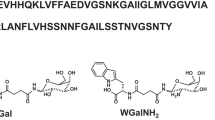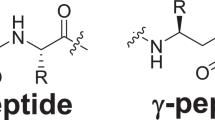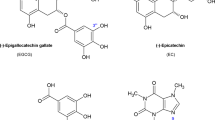Abstract
The human amyloid disorders, familial amyloid polyneuropathy, familial amyloid cardiomyopathy and senile systemic amyloidosis, are caused by insoluble transthyretin (TTR) fibrils, which deposit in the peripheral nerves and heart tissue. Several nonsteroidal anti-inflammatory drugs and structurally similar compounds have been found to strongly inhibit the formation of TTR amyloid fibrils in vitro. These include flufenamic acid, diclofenac, flurbiprofen, and resveratrol. Crystal structures of the protein–drug complexes have been determined to allow detailed analyses of the protein–drug interactions that stabilize the native tetrameric conformation of TTR and inhibit the formation of amyloidogenic TTR. Using a structure-based drug design approach ortho-trifluormethylphenyl anthranilic acid and N-(meta-trifluoromethylphenyl) phenoxazine 4,6-dicarboxylic acid have been discovered to be very potent and specific TTR fibril formation inhibitors. This research provides a rationale for a chemotherapeutic approach for the treatment of TTR-associated amyloid diseases.
This is a preview of subscription content, access via your institution
Access options
Subscribe to this journal
Receive 12 print issues and online access
$189.00 per year
only $15.75 per issue
Buy this article
- Purchase on Springer Link
- Instant access to full article PDF
Prices may be subject to local taxes which are calculated during checkout






Similar content being viewed by others
References
Benson, M. D., Wallace, M. R. “Amyloidosis” In The Metabolic Basis of Inherited Disease (Scrirer, C. R., Beaudet, A. Z., Sly, W. S., Velk, D. eds, New York: McGraw Hill. 2439–2460, 1989).
Colon, W. & Kelly, J.W. Partial denaturation of transthyretin is sufficient for amyloid fibril formation in vitro. Biochemistry 31, 8654–8660 (1992).
Kelly, J.W. Alternative conformations of amyloidogenic proteins govern their behavior. Curr. Opin. Struct. Biol. 6, 11–17 (1996).
Lai, Z., Colon, W. & Kelly, J.W. The acid-mediated denaturation pathway of transthyretin yields a conformational intermediate which can self-assemble into amyloid. Biochemistry 35, 6470–6482 (1996).
Kelly, J. W. The alternative conformations of amyloidogenic proteins and their multi-step assembly pathways. Curr. Opin. Struct. Biol. 8, 101–106 (1998).
McCutchen, S.L., Lai, Z., Miroy, G.J., Kelly, J.W. & Colon, W. Comparison of lethal and nonlethal transthyretin variants and their relationship to amyloid disease. Biochemistry 34, 13527–36 (1995).
Jacobson, D.R. & Buxbaum, J.N. Genetic aspects of amyloidosis. Adv. Human Genetics 20, 69–123 (1991).
Sipe, J.D. Amyloidosis. Crit. Rev. Clin. Lab. Sci. 31, 325–354 (1994).
Benson, M.D., Uemichi, T. Transthyretin amyloidosis. Amyloid Int. J. Exp. Clin. Invest. 3, 44–56 (1996).
Pomerance A. Age-related cardiovascular changes and mechanically induced endocardial pathology. In: Silver MD, ed. Cardiovascular pathology (ed. Silver M.D. 2nd ed. New York: Churchill Livingstone. 155–162, 1991).
Hodkinson, H.M., Pomerance, A. The clinical significance of senile cardiac amyloidosis: a prospective clinico-pathological study. Q. J. Med. 46, 381–387 (1977).
Jacobson, D.R. et al. Variant-sequence transthyretin (isoleucin 122) in late-onset cardiac amyloidosis in black americans. N. Engl. J. Med. 336, 466–473 (1997).
Monaco, H.L., Rizzi, M. & Coda, A. Structure of a complex of two plasma proteins: transthyretin and retinol-binding protein Science 268, 1039–1041 (1995).
Nilsson, S. F., Rack, L., Peterson, P. Studies of thyroid hormone binding proteins. J. Biol. Chem. 250, 8554–8563 (1975).
Blake, C.C., Geisow, M.J., Oatley, S.J., Rerat B. & Rerat, C. Structure of prealbumin: secondary, tertiary and quaternary interactions determined by Fourier refinement at 1.8 Å. J. Mol. Biol. 121, 339–356 (1978).
Blake, C.C.F, Geisow, M.J., Swan, I.D., Rerat, C. & Rerat, B. Structure of human plasma prealbumin at 2.5 Å resolution. A preliminary report on the polypeptide chain conformation, quaternary structure and thyroxine binding. J. Mol. Biol. 88, 1–12 (1974).
Miroy, G.J. et al. Inhibiting transthyretin amyloid fibril formation via protein stabilization. Proc. Natl. Acad. Sci. USA 93, 15051–15056 (1996).
Wojtczak, A., Cody, V., Luft J.R. & Pangborn W. Structures of human transthyretin complexed with thyroxine at 2.0 Å Resolution and 3′-5′-Dinitro-N-acetyl-L-thyroxine at 2.2 Å Resolution. Acta Crystallogr. D 52, 758–765 (1996).
Peterson, S.A. et al. Inhibiting transthyretin conformational changes that lead to amyloid fibril formation. Proc. Natl. Acad. Sci. USA 95, 12956–12960 (1998).
Coelho, T. Familial amyloid polyneuropathy: new developments in genetics and treatment. Curr. Opin. Neurol. 9, 355–359 (1996).
Munro, S.L. et al. Drug Competition for thyroxine binding to transthyretin (prealbumin): comparison with effects on thyroxine-binding globulin. J. Clin. Endorinol. Metab. 68, 1141–7 (1989).
Baures, P.W., Peterson, S.A., Kelly, J.W. Discovering transthyretin amyloid fibril inhibitors by limited screening. Bioorg. Med. Chem. 6, 1389–1401 (1998).
Baures, P.W., Oza, V.B., Peterson, S.A. & Kelly, J.W. Synthesis and evaluation of inhibitors of transthyretin amyloid formation based on the non-steroidal anti-inflammatory drug, flufenamic acid. Bioorg. Med. Chem. 7, 1339–1347 (1999).
Demrow, H.S, Slane, P.R., Folts, J.D. Administration of wine and grape juice inhibits in vivo platelet activity and thrombosis in stenosed canine coronary arteries. Circulation 91, 1182–88 (1995)
Bertelli A.A., et al. Antiplatelet activity of synthetic and natural resveratrol in red wine. Int. J. Tissue React. 17, 1–3 (1995).
MacCarrone M., Lorenzon T., Guerrieri P. & Agro A.F., Resveratrol prevents apoptosis in K562 cells by inhibiting lipoxygenase and cyclooxygenase activity. Eur. J. Biochem. 265, 27–34 (1999).
Cryer, B. & Feldman, M. Cyclooxygenase-1 and cyclooxygenase-2 selectivity of widely used nonsteroidal anti-inflammatory drugs. Am J. Med. 104, 413–421 (1998).
Kurumbail R.G. et al. Structural basis for selective inhibition of cyclooxygenase-2 by anti-inflammatory agents. Nature 384, 644–648 (1996).
Oza, V.B., Petrassi, H.M., Purkey, H.E. & Kelly, J.W. Synthesis and evaluation of anthranilic acid-based transthyretin amyloid fibril inhibitors. Bioorg. Med. Chem. Lett 9, 1–6 (1999).
Horodniak, J.W. et al. Inhibition of prostaglandin synthetase and carrageenan-induced edema by analogs of flufenamic acid. Drugs Exptl. Clin. Res. 2, 35–45 (1977).
Petrassi, H. M., Klabunde, T., Sacchettini, J., Kelly, J. W. Structure-based design of N-phenyl phenoxazine transthyretin amyloid fibril inhibitors. J. Am. Chem. Soc. 122, in the press (2000).
Crook P.R., Willis, J.V., Kendall, M.J., Jack, D.B. & Fowler, P.D. The pharmacokinetics of diclofenac sodium in patients with active rheumatoid disease. Eur. J. Clin. Pharmacol. 21, 331–334 (1982).
Diaz, H., Espina, J. R., Kelly, J. W. A dibenzofuran-based amino acid designed to nucleate antiparrallel β-sheet structure: evidence for intramolecular hydrogen-bond formation. J. Am. Chem. Soc. Am 114, 8316–8318 (1992).
Otwinowski, Z. & Minor, W. Processing of X-ray diffraction data in oscillation mode. Methods Enz. 276, 307–326 (1997).
Brünger, A.T. Crystallography & NMR System. Acta Crystallogr. D 54, 905–921 (1998).
Jones, T.A., Zou, J.-Y., Cowan, S.W. & Kjeldgaard, M. Improved method for building protein models in electron-density maps and the location of errors in these models. Acta Crystallogr. A 47, 110–119 (1991).
Evans, S. V. SETOR: Hardware lighted three-dimensional solid model representations of macromolecules. J. Mol. Graphics 11, 134–138 (1993).
Acknowledgements
This work is supported by NIH grants (JCS and JWK), the Welch foundation and the Skaggs Institute for Chemical Biology. T.K. thanks the Deutsche Forschungsgemeinschaft for a postdoctoral fellowship.
Author information
Authors and Affiliations
Corresponding author
Rights and permissions
About this article
Cite this article
Klabunde, T., Petrassi, H., Oza, V. et al. Rational design of potent human transthyretin amyloid disease inhibitors. Nat Struct Mol Biol 7, 312–321 (2000). https://doi.org/10.1038/74082
Received:
Accepted:
Issue Date:
DOI: https://doi.org/10.1038/74082
This article is cited by
-
Antioxidant ferulic acid prevents the aggregation of bovine β-lactoglobulin in vitro
Journal of Chemical Sciences (2020)
-
Amyloid deposition in a mouse model humanized at the transthyretin and retinol-binding protein 4 loci
Laboratory Investigation (2018)
-
Inhibition of protein misfolding and aggregation by natural phenolic compounds
Cellular and Molecular Life Sciences (2018)
-
Biophysical Aspects of Alzheimer’s Disease: Implications for Pharmaceutical Sciences
Pharmaceutical Research (2017)
-
Repositioning tolcapone as a potent inhibitor of transthyretin amyloidogenesis and associated cellular toxicity
Nature Communications (2016)



